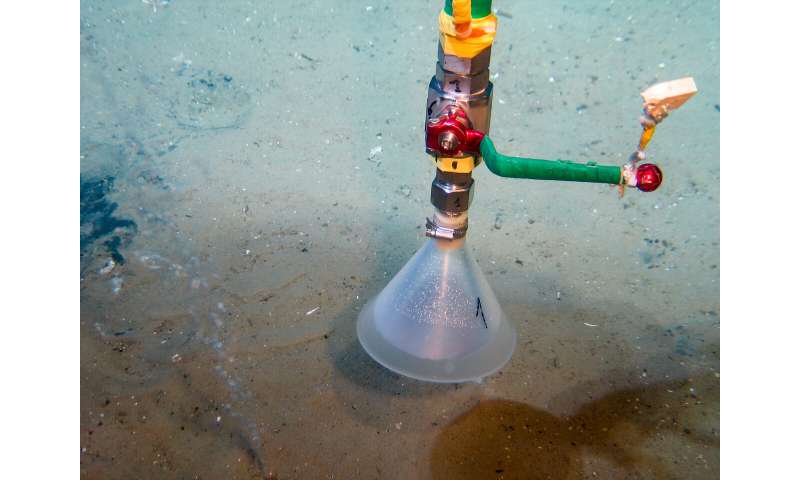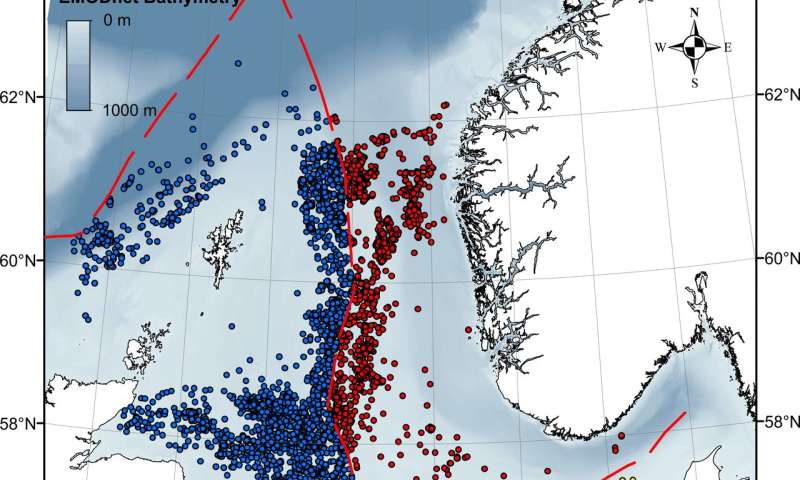#New study confirms extensive gas leaks in the North Sea
“#New study confirms extensive gas leaks in the North Sea”

During expeditions to oil and gas reservoirs in the central North Sea in 2012 and 2013, scientists of the GEOMAR Helmholtz Centre for Ocean Research Kiel (Germany) became aware of a phenomenon that had been hardly recognized before. They discovered that methane bubbles emerged from the seabed around abandoned wells. The gas originates from shallow gas pockets, which lie less than 1000 meters deep below the seafloor and that were not the target of the original drilling operations. An initial assessment showed that these emissions could be the dominant source of methane in the North Sea.
A new study published by GEOMAR scientists today in the International Journal of Greenhouse Gas Control, confirms this initial estimate on a larger data basis. “We have combined investigations at additional wells with extensive seismic data. The results clearly show that thousands of tons of methane are leaking from old drill holes on the North Sea floor every year,” says Dr. Christoph Böttner, who is the main author of the study, which is part of his doctoral thesis at GEOMAR.
During expeditions with RV POSEIDON in 2017 and 2019, the researchers were able to detect gas leakage at 28 of 43 directly investigated wells. “The propensity for such leaks increases the closer the boreholes are located with respect to shallow gas pockets, which are normally uninteresting for commercial use. Apparently, however, the disturbance of the overburden sediment by drilling process causes the gas to rise along the borehole,” explains Dr. Matthias Haeckel from GEOMAR, who lead the study.
In addition, the team used available seismic data of the industry from the British sector of the North Sea to make further statements about the boreholes in the area. “We cover 20,000 square kilometers of seafloor in our study, which is approximately the size of Wales. This area contains 1,792 wells of which we have information. We evaluated a number of factors, such as location, distance to shallow gas pockets, and age, based on our direct measurements and weighted how these factors promote methane gas leakage from old wells. The most important factor was indeed the distance of the wells from the gas pockets,” explains Dr. Böttner.

The positions of the boreholes and the location and extent of the gas pockets indicate that this area of the North Sea alone has the potential to emit 900 to 3700 tons of methane every year. “However, more than 15,000 boreholes have been drilled in the entire North Sea,” adds Dr. Haeckel.
In seawater, methane is usually consumed by microbes. This can lead to local seawater acidification. In the North Sea, about half of the boreholes are at such shallow water depths that part of the emitted methane can escape into the atmosphere. Methane is the second most important greenhouse gas after carbon dioxide.
The authors of the study encourage the industry to publish their data and recommend more independent emission measurements from abandoned wells in order to develop stricter guidelines and legally binding regulations for abandonment procedures.
“The sources and sinks of methane, the second most important greenhouse gas after carbon dioxide, are still subject to large uncertainties. This also applies to emissions from the fossil energy sector. In order to better understand the reasons for the continuously increasing methane concentrations in the atmosphere and to be able to take mitigation measures, it is important to have a reliable numbers of the individual anthropogenic contributions,” summarizes Dr. Haeckel.
More information:
Christoph Böttner et al, Greenhouse gas emissions from marine decommissioned hydrocarbon wells: leakage detection, monitoring and mitigation strategies, International Journal of Greenhouse Gas Control (2020). DOI: 10.1016/j.ijggc.2020.103119
New study confirms extensive gas leaks in the North Sea (2020, July 30)
retrieved 30 July 2020
from https://phys.org/news/2020-07-extensive-gas-leaks-north-sea.html
This document is subject to copyright. Apart from any fair dealing for the purpose of private study or research, no
part may be reproduced without the written permission. The content is provided for information purposes only.
If you want to read more Like this articles, you can visit our Science category.
if you want to watch Movies or Tv Shows go to Dizi.BuradaBiliyorum.Com for forums sites go to Forum.BuradaBiliyorum.Com


